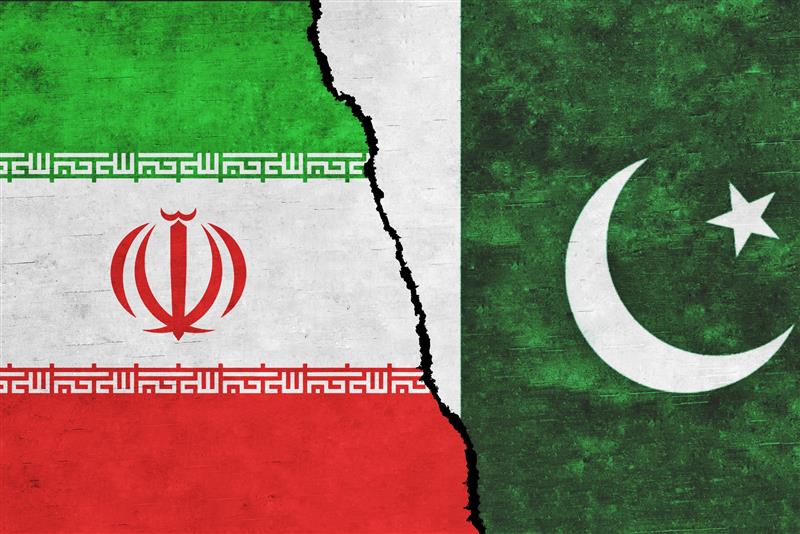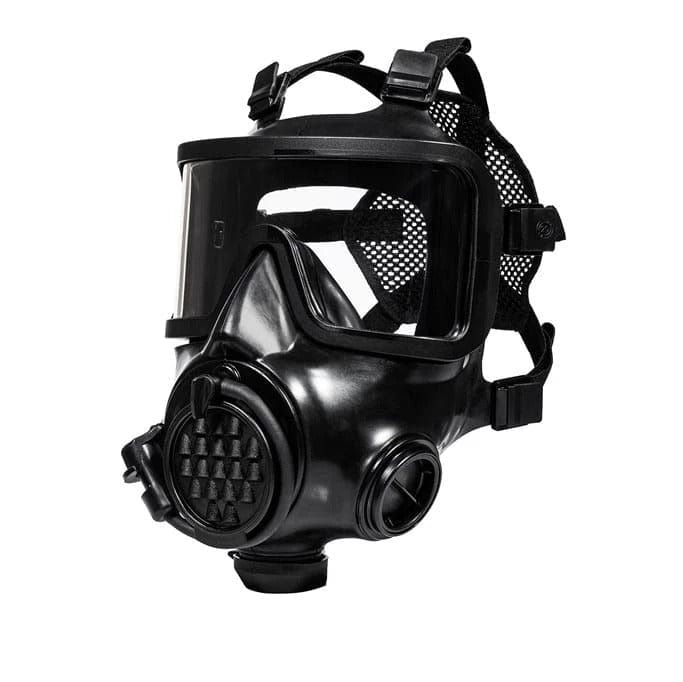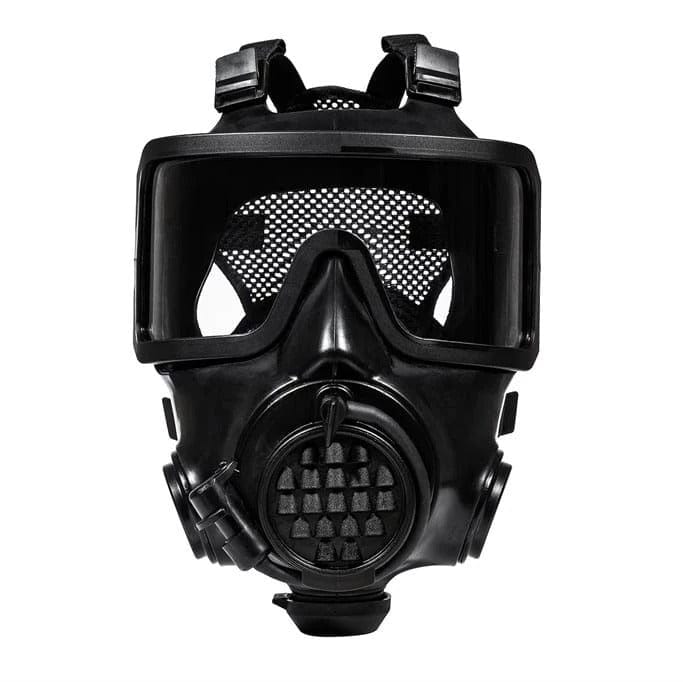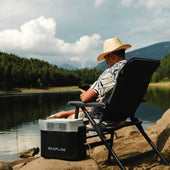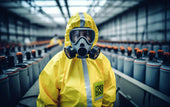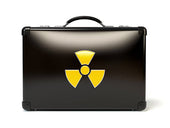Nuclear War: Be Ready and Prepared

If you are serious about being prepared, you understand it is not merely about natural emergencies or home power grid failures.
Preparedness is about having your finger on the pulse of the larger picture.
That means what is occurring elsewhere around the world. Currently, two locations every American prepper needs to monitor are Pakistan and Iran.
They may appear distant, but what happens down there could easily impact all of us here in the States.
Pakistan is unstable and already possesses nuclear weapons. It is a nation where extremists actually hold power, and the government is fighting to remain in power.
Iran is pursuing its nuclear program and is continuously at odds with nations such as Israel and the United States. One misstep and we are facing a serious international crisis.
So what does this imply for preppers? You can't simply prepare for what is immediately in front of you. You must prepare for the ripple effect of events on a worldwide scale.
A nuclear war, even abroad, can lead to economic collapse, cyber attacks, supply chain breakdown, or even direct harm like dirty bombs or radiation contamination.
That is why proper protective gear is important. Let's examine the MIRA Safety brand at Prepared Bee.
They have military-grade gas masks, protective suits, and other gear designed for actual emergencies.
In case something goes wrong and the world turns upside down in an instant, this is the type of gear that will give you a fighting chance.
Understanding Nuclear Flashpoints
What Is a Nuclear Flashpoint?
A nuclear flashpoint is a location in the world where tensions between nations may boil over into nuclear war. It is not some distant hypothesis.
It is a tangible threat that might alter life as we know it. These flashpoints are most commonly located where there are existing conflicts and where one or more nations possess nuclear weapons or are attempting to acquire nuclear weapons.
One of the most famous examples is the Cuban Missile Crisis in 1962. The Soviet Union quietly installed nuclear warheads in Cuba.
When the United States discovered this, it brought the world to the brink of nuclear war. Leaders on both sides braced themselves for the worst for nearly two weeks.
If there had been one mistake, we would have witnessed the total employment of atomic weapons for the first time since World War II.
Another instance was the Kargil war in 1999 between Pakistan and India. They are both nuclear powers with a past history of conflict.
In that conflict, there was genuine fear that one or both sides could have deployed tactical nuclear weapons on the field of battle. That would have initiated a chain reaction of disastrous propositions far beyond the area.
Why Should Preppers Pay Attention?
Just because a nuclear bomb explodes somewhere else in the world does not necessarily mean we are safe. A nuclear disaster doesn't have to occur in your neighborhood to impact your life.
Radiation can cross the atmosphere, global markets can collapse overnight, fuel prices can skyrocket, and food supplies can be severed. Panic travels faster than any government can react.
We also need to consider things such as waves of refugees, cyber attacks, and assaults on the power grid.
If anything erupts in the Middle East or South Asia, you can bet that it will have ripple effects all around the world and severely impact both the United States and European nations.
That is why preppers must remain alert. You can no longer afford to just think local.
With so many states having nuclear weapons and some even seeking to expand their nuclear arsenal, we are in a new nuclear era.
The quantity of nuclear weapons on the planet may not be in the tens of thousands like during the Cold War, but the weapons themselves are much more advanced and lethal.
The Pakistan Nuclear Threat

Why is Pakistan a high-risk nuclear nation?
Of all the nations that have nuclear weapons, Pakistan is perhaps the most unstable. It is not merely that they possess a nuclear arsenal. They have grave issues keeping the nation together.
When a nation with nuclear-tipped warheads is politically unstable, it is a genuine nuclear threat not only to its neighbors but to the world at large.
Pakistan also started developing nuclear weapons in the 1970s. Since then, they have developed a nuclear arsenal containing strategic and tactical nuclear weapons.
Although the exact number of nuclear warheads is not fully established, estimates suggest that they have more than one hundred fifty deployed warheads and are continuing to grow.
In contrast with nuclear weapon countries that entered the nuclear non-proliferation structure under the United Nations, Pakistan is excluded from that paradigm.
That signifies fewer controls from bodies such as the International Atomic Energy Agency.
The greater problem is that Pakistan is unstable. Civilian leaders there are weak, and the army retains most authority.
There have been several military coups there, and political unrest is constant.
Throw into that the emergence of terrorist organizations such as the Tehrik i Taliban Pakistan, and you have a volatile cocktail. U.S. intelligence has worried for decades about rogue nuclear material access or even complete nuclear devices.
When you combine fissile materials, a split government, extremist organizations, and a complete nuclear weapons program, you are looking down the barrel of a possible nuclear disaster.
All it takes is one error, one insider attack, or one tainted chain of command to start a nuclear war.
What does it mean for American Preppers?
If a bomb explodes in Pakistan, you may believe it has nothing to do with our lives here. But that is no longer the way the world is.
A war between Pakistan and India using nuclear weapons could close down trade arteries, rattle the world economy, or set off flows of refugees and anarchy all over Europe and the Middle East.
Such a shock can reach the United States within hours, not weeks.
In addition to that is the concern that black market players may obtain highly enriched uranium or other materials from the Pakistan nuclear stockpile.
That is how a dirty bomb winds up on a shipping container or truck bound for a big U.S. city.
That is why individual preparedness is important. When events spin out of control on a worldwide scale, it is too late to begin scrambling.
You need to be prepared long before the warnings sound.
Being in possession of the proper equipment beforehand—such as a certified gas mask and a full body protective suit—can be a factor when it comes to survival in the face of radioactive fallout or other hazards associated with nuclear conflict.
MIRA Safety makes some of the top protective gear available to civilians.
Whether it's the CM-6M gas mask or an entire NBC-rated hazmat suit, you talk about genuine gear for threats.
Look at their entire range of gear on Prepared Bee and stock up on the portion of your kit that addresses the worst-case scenario.
Iran's Nuclear Ambitions and Regional Tensions
Iran's Nuclear Program Explained
Iran's journey to nuclear power did not begin yesterday.
It began in the 1950s during the Shah, when nuclear technology was introduced for the first time with assistance from the United States under the Atoms for Peace program. Things were different after the 1979 revolution.
Iran's new regime shifted priorities and gradually developed a clandestine nuclear program outside the normal framework of the International Atomic Energy Agency.
In the early 2000s, Iran's intention to produce nuclear weapons became more apparent.
Highly enriched uranium enrichment, concealed sites, and refusal to cooperate with inspectors raised international concern about Iran's motives.
Some think they are seeking a nuclear deterrent, while others consider it a first step to eventually constructing an atomic bomb.
Either way, Iran insists that it is not developing nuclear weapons, but continues to enhance its nuclear weapons program.
Currently, Iran possesses sufficient fissile materials to achieve weapons-grade levels rapidly in the event that it decides to break out.
Their continued enrichment activities and missile tests place them perilously close to becoming the next nuclear-armed state.
That would add yet another layer of complexity to security throughout the Middle East, particularly with nations such as Israel and Saudi Arabia regarding Iran as an existential nuclear threat.
Tensions are still high. Iran's nuclear strategy and regional aspirations are not merely defense-minded.
They are about remapping power in the region, and that is a threat to nuclear disarmament initiatives and non-proliferation frameworks globally.
What Could Go Wrong
A great deal. Israel has indicated in no uncertain terms that it will not accept a nuclear Iran. There is always the option for a preemptive bombing of Iran's enrichment sites.
That would trigger a wave of retaliation through proxy forces like Hezbollah, or even coordinated drone and cruise missile attacks throughout the region.
One of the largest threats is the Strait of Hormuz. If Iran attempts to blockade it as a response to an attack, the world's supply of oil can be cut off overnight.
We are not talking about some far-off problem. This is a very real national security threat that would directly impact the United States and European countries.
Fallout for the U.S.
If it deteriorates in Iran, be ready for a wave of repercussions. First, gasoline prices will soar. That alone can trigger panic buying, inflation, and food shortages.
Second, Iran has a reputation for its cyber warfare. Strokes on U.S. power grids, water infrastructure, or even hospital networks might occur quickly and unexpectedly.
Worst case? A dirty bomb was brought in by a sleeper cell or via a major port city. Iran has connections to non-state actors who might employ radioactive materials in an urban attack.
You don't need a full nuclear war to instill terror. One improvised device is enough to induce chaos and long-term contamination.
That is why this matters to preppers. You cannot control what governments do, but you can control your own readiness.
What Preppers Can Learn and Do

Lessons for the Ready American
The last few years have taught us one thing, if nothing else: that disasters do not always arrive the way we anticipate.
Many people are only concerned with hurricanes, flooding, or civil disturbances.
And while those are certainly legitimate concerns, the reality is that the threat of a nuclear attack around the world has been known to bring as much turmoil here at home.
We live in the nuclear age, and the globe is riddled with states that have nuclear weapons. Countries such as North Korea, Pakistan, and Iran are becoming more unpredictable by the year.
With nuclear proliferation increasing and nuclear weapons programs becoming increasingly sophisticated, even a small nuclear war can cause ripple effects that crash against your local supply chain, gas prices, and safety.
You don't have to be living close to a military base or nuclear target to be impacted by nuclear warheads.
A collapse of order in the Middle East, or an assault on a nuclear-armed facility halfway across the globe, can lead to worldwide panic, financial crashes, and even cyberattacks on the grid here in the United States.
Staying current on geopolitical developments and being aware of increased tensions between nuclear nations is as crucial as monitoring the weather report.
Nuclear escalation is an actual threat, and your strategy must account for it.
Tactical Preparation Steps
The following are some absolute requirements if you're serious about being prepared for a nuclear disaster:
-
Create a nuclear emergency checklist addressing gear, comms, and evacuation.
-
Keep potassium iodide pills on hand to shield your thyroid from radiation.
-
Acquire a good water filter that can filter fallout-tainted water.
-
Invest in a complete hazmat suit and NBC-rated protection (not the cheap ones).
-
Get backup power, long-term food, and off-grid communications equipment.
-
Practice drills with your family members. Knowing the equipment is one thing, operating it under stress is another.
The Role of Personal Protective Equipment
Not all personal protective gear is the same. There's a significant difference between general-issue equipment and CBRN-rated gear specifically made to deal with nuclear, biological, and chemical threats.
Let's take apart some of the best equipment from MIRA Safety — the type of gear that can actually give you a fighting chance in an actual nuclear warfare scenario:
-
CM-6M Gas Mask – Full-face mask constructed for genuine military and civilian defense applications. Not like several amateur masks, this is constructed to function within hard conditions, even in the face of fallout or hazardous weaponry.
-
NBC-77 SOF Filter – Filters constructed specifically for nuclear, biological, and chemical defense. These filters offer safeguarding from radioactive particles, chemical warfare agent substances, and industrial poisons.
-
HAZ-SUIT – This is a military-grade suit that resists mass destruction agents. It is made to be worn over your clothes and provide a complete barrier from radioactive dust or chemical exposure.
In the event of a nuclear test, a direct strike, or an incident in which atomic bombs are detonated, these gadgets may provide you with valuable time to reach a safe area or shelter-in-place successfully.
Civil defense was a concern during the Cold War. Now, it is largely up to us—the ones who are listening and getting ready quietly.
Conclusion: Global Dangers, Local Readiness
The dangers simmering in Pakistan and Iran are not theirs alone.
When you are working with nations that possess nuclear weapons or are attempting to acquire them, each choice they make can have ripple effects that strike us here at home.
Whether it is fallout in the air, free-falling global markets, or cyberattacks on our grid, the effect will not be bound by borders.
As preppers, we simply cannot afford to turn a blind eye to what's going on abroad. The world is far too interconnected.
Nuclear conflict does not need to begin here to impact our families, our livelihoods, or our security.
Given that many states now have nuclear capabilities and that nuclear strategy is changing rapidly, it makes sense to keep one's ears open to developments around the world.
That is more than reading the headlines. It is doing something—creating a plan, double-checking your stock.
Ensure that your protective equipment is the authentic article. Nuclear emergencies do not provide warning, and it is too late to go shopping when they strike.
Don't wait for the sirens. Protect yourself and your family with professional-grade MIRA Safety gear — in stock now at Prepared Bee.

